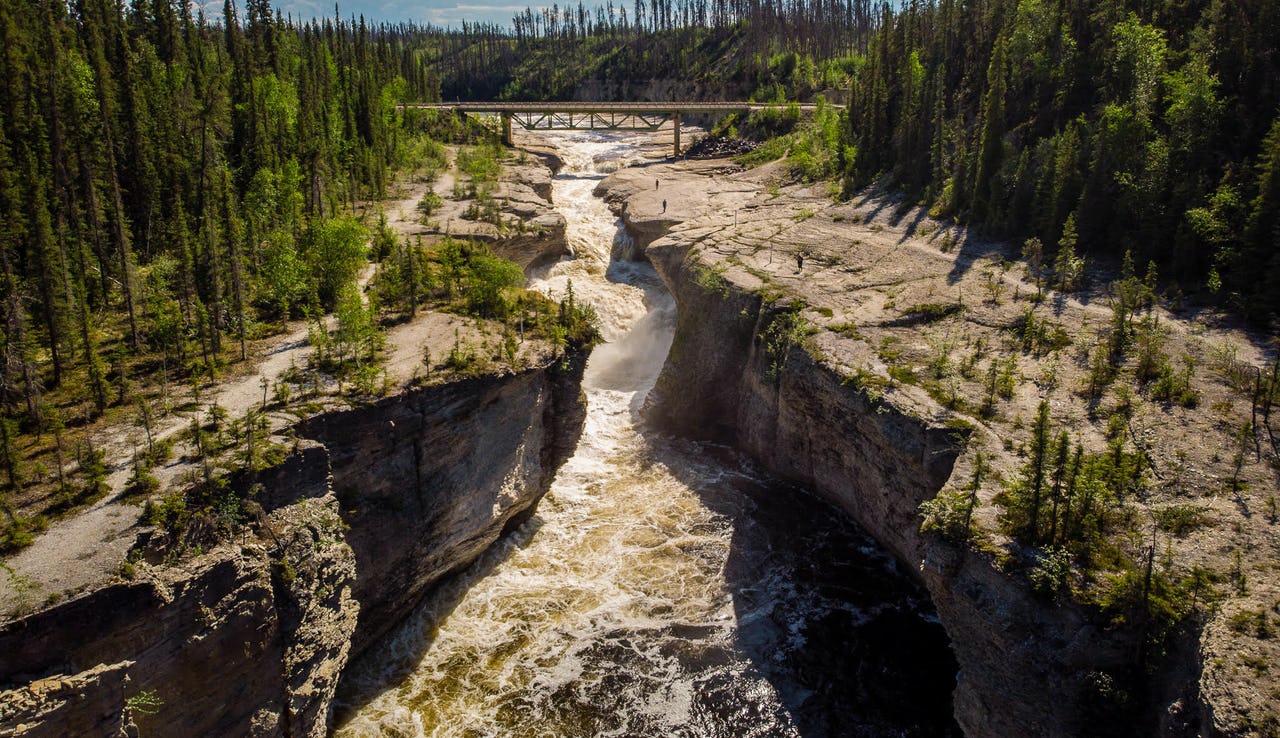Treaties, Modern Negotiation, and Indigenous Resource Management in the Canadian Arctic

Flexibility in resource management can support nation-to-nation partnerships in the Northwest Territories. Photo: The Gordon Foundation
Through a partnership with the Gordon Foundation, The Arctic Institute is publishing a series of papers on Canadian Arctic policy critiques and solutions written by Jane Glassco Northern Fellows. The Jane Glassco Northern Fellowship Program recognizes the leadership potential of northern Canadians aged 25-35 who are passionate about addressing emerging policy challenges and building a strong North. During the 18-month program, Fellows deepen their understanding of important northern issues, and develop the skills to articulate and advance their ideas and policy research. Fellows publish individual and group policy research papers. For more information, please visit The Gordon Foundation website and follow the Fellowship on Twitter.
- Turning to Traditional Processes for Supporting Mental Health
- Education Policy to Supports On-Land Learning in Northwest Territories
- School Curriculum for Arctic Youth Must Include Land Claim Agreements
- Balancing Worldviews: Climate Change Solutions in Canada’s North
- Ways Forward in Addictions Programming in the Canadian Arctic
- Indigenous Language, Community, and Legends in Post-Secondary Education
Caught between two legal and political systems with conflicting interpretations of history, the Dehcho self-government negotiations falter. The task: the Dehcho Dene, Government of the Northwest Territories (GNWT) and Canada must harmonize their competing visions through nation-to-nation partnership and treaty federalism. What principles ought to guide constitutional struggles of this kind? During the first gathering of the fourth cohort of the Jane Glassco Northern Fellowship in the Yukon, Ta’an Kwäch’än elder Shirley Adamson impressed upon me that we “must always remember the treaties.” Tethering modern negotiations to historical relationships both honours the past and appropriately frames the terms of dialogue. The Two Row Wampum, a 1613 treaty between the Haudenosaunee and Europeans often cited as an ideal framework for modern treaty-making,3symbolizes a ship sailing side-by-side with a canoe in the spirit of coexistence and non-interference. However, the Dehcho Process looks more like a ship and canoe passing in the night. Yet these voyagers have met before, promising to live in peace and friendship for as long as the sun shines, the grass grows and the river flows. The canoe communicates this to the ship—but the ship glides on, with only a flicker of recognition, and the treaty partners slip into darkness once again.
Attempting to distil a politically and historically complex negotiation, this research modestly describes the positions of each party, identifies areas of mutual understanding, and analyzes potential compromises and opportunities going forward. Three primary sources inform my analysis. First, the normative intent behind Treaty 8 and Treaty 11, which was to create obligations of peace and friendship between the Dehcho Dene and the Crown. Second, lessons from the success of Edéhzhíe, the first Indigenous protected area in the Dehcho region. Edéhzhíe exemplifies how co-governance mechanisms can advance both Dehcho First Nations (DFN) and Crown interests, even where these interests greatly diverge. Finally, I apply the Principles Respecting the Government of Canada’s Relationship with Indigenous Peoples to the rolling Agreement in Principle (AiP), providing as they do objective criteria for establishing nation-to-nation partnership. Out of respect for the extensive negotiations and offers made to date, no numerical suggestions for land quantum or cash settlements are given. Instead I focus on areas where DFN and Crown worldviews can co-exist in symbiotic tension. I find that:
- DFN has considerable opportunities to achieve their sovereignty goals within the GNWT’s and Canada’s legislative and administrative scheme;
- The GNWT and Canada can achieve legal certainty in exchange for flexible and innovative approach to resource management in the Dehcho region; and
- The rolling AiP reflects some of the Principles Respecting the Government of Canada’s Relationship with Indigenous Peoplesbut lacks others. Cultivating the absent principles could greatly improve the terms of self-government.
As these recommendations suggest, progress requires compromise. Land quantum remains the most contentious barrier—essentially, how much comprises the settlement area. Addressing other concerns peripheral to, but touching on land quantum will diminish the numerical importance of “X kilometres squared.” Strict quantum will always be critical, but agreement becomes more likely where adjacent concerns are satisfied. DFN influence in resource management decisions can find expression through the co-governance mechanisms explored here, which include adapting resource management to mirror the spirit of Indigenous-led governance taking shape in Edéhzhíe, and giving equal weight and consideration to Dehcho law in decisions to grant or deny licences, permits and project certificates.
I begin with a brief history of Treaty 8 and Treaty 11 as the guiding framework for the relationship between the Dehcho Dene and the Crown. An account of the negotiating context and summary of the parties’ positions is then provided. Analysis of Edéhzhíe’s lessons for the Dehcho Process follows. I highlight areas of compromise and recommend several options that would enable parties to advance their respective interests. I recognize that in 2015, the GNWT appointed a Ministerial Special Representative to make recommendations on the Dehcho Process. I am grateful for the information her report provides. I build on aspects of these recommendations, but also augment them in what I believe are new and helpful ways.
Don Couturier was born and raised in Yellowknife, Northwest Territories, and recently completed law school and a Master of Public Administration at Queen’s University.